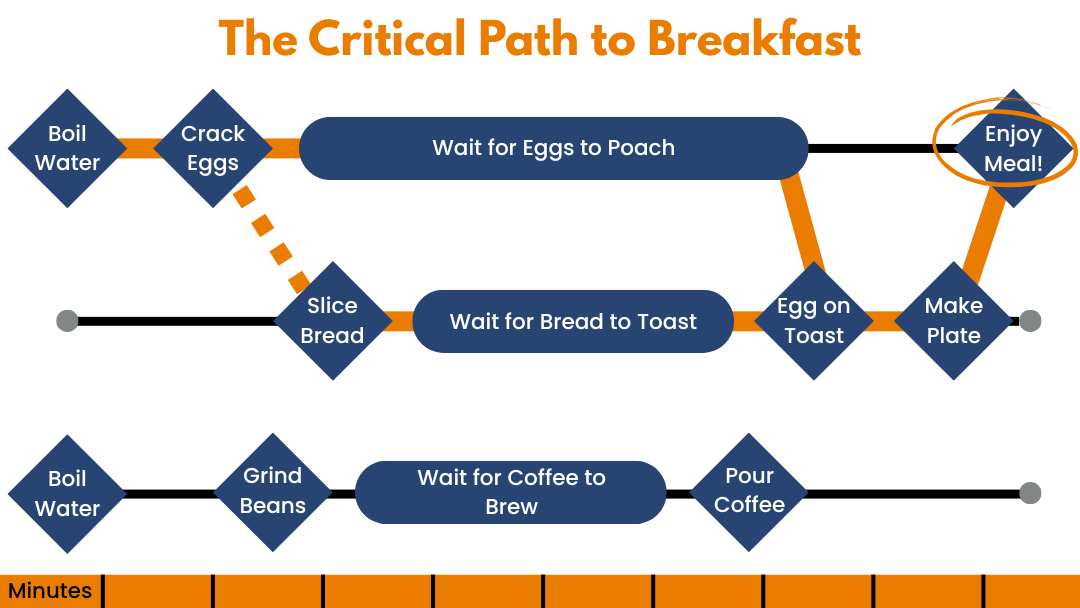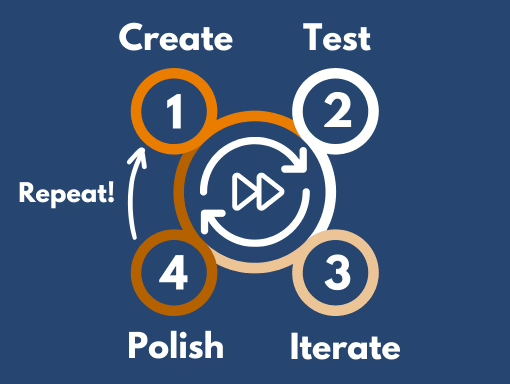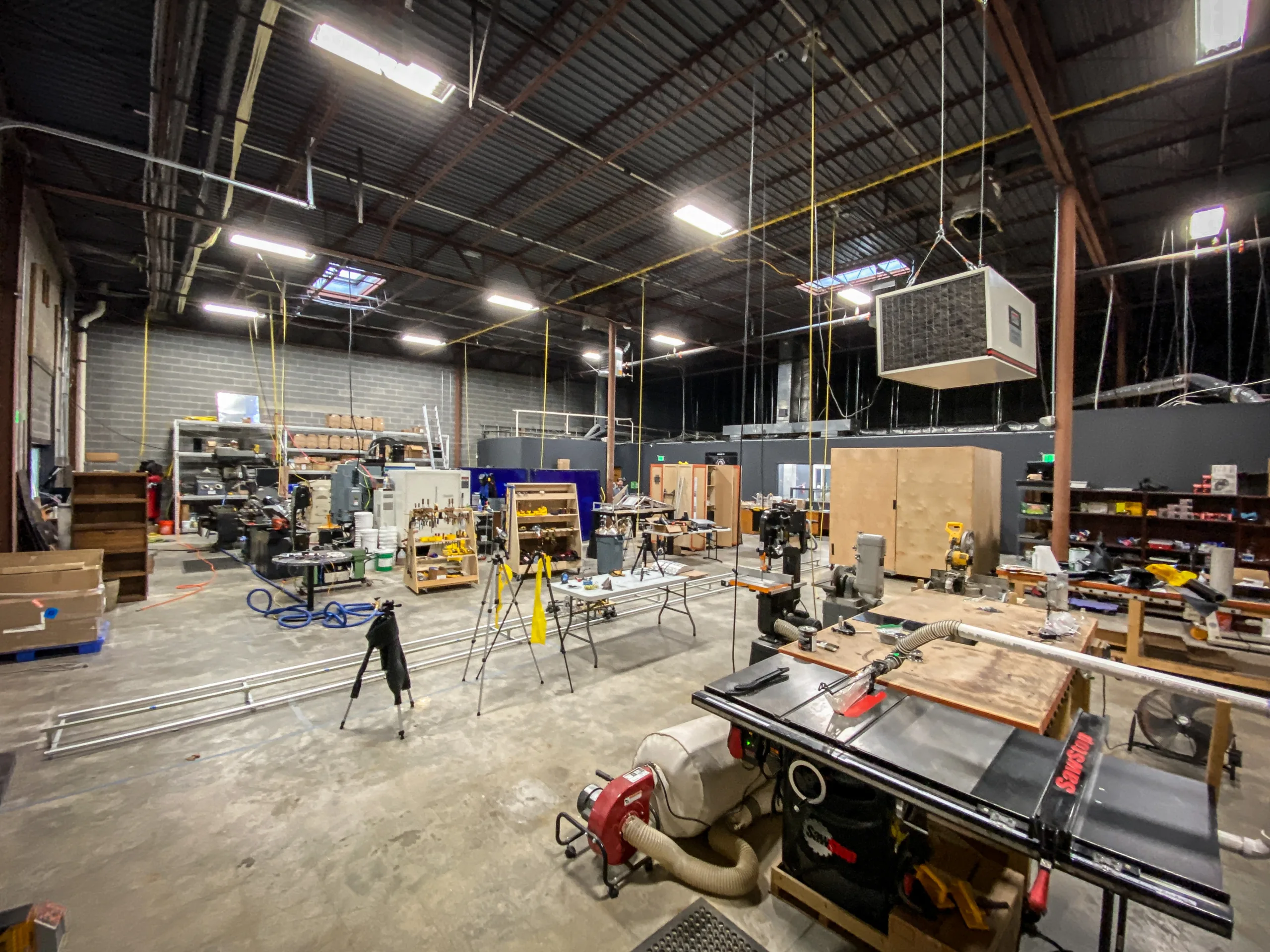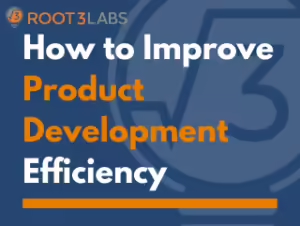Fast Doesn't Mean Rushed: Use the Critical Path for a Critical Advantage
“We need this yesterday!”
Every engineer has heard this before, usually followed by a sinking feeling that quality is about to be sacrificed for speed. But, what if that tradeoff wasn’t necessary?
Over time, we’ve found that speed and quality don’t have to be opposing forces – they can be complementary when approached correctly. The key is not to rush or cut corners, but to understand the Critical Path to guide your development.
Chad has spent over 15 years leading complex engineering projects in medical device development and defense systems. He’s been hands-on from early-stage prototyping to full-scale manufacturing, giving him unique insights into the challenges of bringing devices to market. Chad is always thinking about how to improve the development process, so we convinced him to share some of those musings with you!
Rethinking the Speed / Quality Relationship
“Speed and Quality aren’t opposed to each other,”
So, let’s challenge that old idea. Is it really true that moving quickly means sacrificing quality? (Spoilers: NO!)
If you think about speed and quality, they’re not opposed to each other. You can give yourself the time to dedicate to quality by eliminating all ineffective work.
The distinction is crucial and usually misunderstood. Getting speedy results isn’t about rushing, it’s about prioritizing effectiveness above all else.
The Critical Path is the Backbone of Effective Speed
While there are many facets to project planning, the Critical Path concept is key to maintaining your fastest possible development time. Our goal is to visualize every single project task in one massively condensed timeline. That will show us everything that needs to be done consecutively, what can be done in parallel, and where we can expect delays.
Consider breakfast! You need to get out the door fast, but not before a quick meal and cup of coffee.
Let’s think about the most efficient way to make a quick breakfast of eggs on toast and coffee – you probably wouldn’t make your eggs from start to finish, set them aside, and then start on your toast and so on. (And if you did – how are you keeping your eggs warm?)

Instead, you would likely turn on the coffee pot first thing to let it run, and then pop your bread in the toaster after the eggs are already poaching. If you already think and cook like this – congrats! You’re already in the right mindset.
Also – notice how the Critical Path line in the graphic above doesn’t intersect with our coffee brewing at all! The coffee may be critical to the overall goal of waking up and getting to work, but those tasks aren’t dependent on other branches (eggs, toast) and they can be completed comfortably within the time it will take us to complete the longest tasks.
How the Critical Path Leads to Quality
The Critical Path method is more than just a planning tool; it requires a fundamental shift in how we view speed.
But, what makes the Critical Path method any different from general project timeline management?
- Distinguishes between speed-critical and quality-critical tasks
- Identifies where cutting time will damage outcomes and where it won’t
- Reveals which tasks directly impact delivery date and which have float time
Speed Without Compromising Quality
By focusing all of your resources on Critical Path activities exclusively, quality will always improve as a result thanks to:
- Spending more time on tasks that matter most
- Eliminating distractions from non-Critical Path work
- Creating clear priorities that prevent last-minute scrambles
- Identifying risks earlier in development
Unlike scoping for your Minimum Viable Product, this approach is specifically about optimizing the sequence and focus of work – not solely feature prioritization. But, they do work well when paired together for streamlined, rapid development.
Learning Fast: The Compounding Returns of Speed
Another powerful benefit of prioritizing speed in your development isn’t just faster delivery, but the accelerated learning cycle you create. Speed is critical because you can learn with every iteration of your prototype. With each one of those iterations you learn something about all of it and how it all fits together.
What is the compounding value of these quick-turn iteration cycles?
- First Iteration: Validate basic functionality
- Second Iteration: Incorporate user feedback
- Third Iteration: Refine and optimize
- Fourth Iteration: Polish and enhance
If you can complete these four cycles in the time your competitors take to complete one, the quality difference becomes exponential. And not because you rushed, but because you learned four times as much in the same amount of time!

The Speed Team: What Makes Root3 Labs Different

In-House Manufacturing Multiplies Speed
One of our unique superpowers is our in-house machine shop! Being able to do most of our own machining in-house eliminates waiting periods that tend to bog down development processes.
When we identify a solution that we want to test, we can design, fabricate, and get to testing in hours or days rather than weeks. This capability can fundamentally change what’s possible in a tight time frame.
Meet Tight Engineering Deadlines on the Critical Path
Based on our experience, here are some tools and techniques to accelerate your development without compromising on quality. You can enact some of these tips today!
1. Rapid Prototyping
Our approach to always being ready for problem-solving and implementation:
- Keep materials on hand for common prototyping needs
- Maintain the workshop environment well – it should always be ready to use!
- Develop templates for frequently used components
- Standardize quick-turn documentation formats
2. Decision Velocity
The stalled act of deciding alone can be enough to derail a whole project timeline. Keep things on Path by making speed-critical decisions with a strategic framework:
- 60-Second Rule: Most decisions should be made in under a minute
- Two-Way Doors: Identify which decisions are easily reversible
- Delegation Clarity: Identify who can make decisions without approvals
- Documentation Triage: Only document what truly needs to be documented
Putting it All Together: The Speed-Quality Cycle
When implemented correctly, Critical Path thinking can create a flywheel for your project:
- Focusing on Critical Path activities increases speed
- Increased speed enables more cycles of Rapid Prototyping
- More iterations of your prototype leads to better learning and quality
- Higher quality reduces the need for reworks and increases confidence
- Reduced need to go back for reworks accelerates progress on the Critical Path
- And the cycle keeps going!
This is how Root3 Labs consistently delivers projects faster and with better quality than expected. It’s not magic (as much as we claim to be Engineering Wizards!) – it’s solid methodology.
Speed as Strategy
The ability to move quickly – without rushing – is no longer just a nice-to-have. To keep up today, it’s a strategic advantage that can compound into massive benefits over time.
By embracing Critical Path thinking, you can meet your deadlines with more confidence than ever. You’ll know you learned as much as you could and focused your resources where they would make the most effective impact.
Remember not to rush, but to ruthlessly eliminate anything that doesn’t add value to your Critical Path and you’ll be amazed at the results you can deliver.
Written By: Chad Schneider, MSE, P.E.




